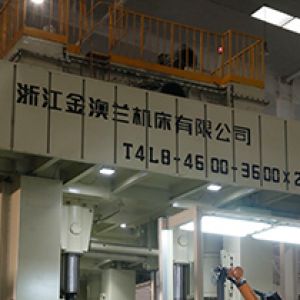Stamping DiePosted by Nancy Huang on October 31st, 2018 As an inseparable part of metal stamping line, stamping die and tooling system is much important in its service life and precision as it directly works on stamping parts and effects parts' forming quality. So KINGLAN invests in this product and much careful of cooperating with our partners. Our capabilities include the production of progressive dies, transfer dies, single stage dies, multi-stage dies and more. These punch press dies can be created for various applications in industries such as automotive, home appliances, stationery, hand tool, hardware, computer, electronics etc.
According to the deformation properties of stamping parts, the stamping process can be divided into two categories: material separation and forming, each of which includes many different processes. According to the combination of the stamping processes, the stamping dies can be roughly divided into: single stage die, compound die and progressive die.
Below is the introduction of the basic process of stamping:
1.Punching
1)Blanking: The die cuts the sheet along the closed line, the part that is washed down is the workpiece, and the rest is waste. The size of the design is based on the mold core, and the gap is taken on the punch;
2)Piecing: The die cuts the sheet along the closed line, and the part that is washed is waste. The size of the design is based on the punch, and the gap is taken on the mold core;
2.Cutting: The sheet is cut by a mold and the front line is not closed.
3.Incision: the sheet is partially cut on the blank, and the cut portion is bent.
4.Trimming: Cut off excess material from the edge of the semi-finished product after drawing or forming.
5.Section cutting: Cut the semi-finished product into two or more workpieces, often used for double stamping.
6.Bending: The material is bent into a shape by a mold (V-shaped/U-shaped/Z-shaped, etc)
7.Rolling round: roll the end of the sheet into round.
8.Twisting: twist a portion of the sheet to an angle.
9.Deep drawing: the sheet material is pressed into a hollow workpiece, and the wall thickness is basically unchanged.
10.Thinning drawing: change the size of the hollow part by reducing the diameter and wall thickness and increasing the height of the workpiece to obtain the required thickness workpiece.
11.Flange of the hole: Turn the edge of the hole in the sheet or workpiece into an upright edge.
12.Flange of the outer edge: the outer edge of the workpiece is turned up to a circular arc or a curved upright edge.
13.Shrinking: shrink the mouth of the hollow piece.
14.Flaring: enlarge the mouth of the hollow piece, often used for pipes
15.Undulations: the ribs, patterns or text are pressed out on the sheet or workpiece and all undulations are thinned.
16.Crimping: Rolling the edge of the hollow piece into a certain shape.
17.Bulging: a part of the hollow member (or pipe) is radically expanded to be convex.
18.Spinning: use the bar or roller to press the blank sheet into a certain shape.
19.Shaping: Correcting the workpiece with less accurate shape.
20.Leveling: flatten the uneven surface of the blank or workpiece.
21.Imprinting: change the thickness of the workpiece and press the text or pattern on the surface.
22.Forward extrusion: The metal blank in the cavity is in a plastically deformed state under the action of the punch pressure, so that it is extruded from the die hole, and the metal flows in the same direction as the punch.
23.Backward extrusion: during metal extrusion, plastic flow along the gap between the punch and the cavity, the flow direction is opposite to the direction of the punch movement.
24.Compound extrusion: the combination of forward and backward extrusion.
KINGLAN introduced new technology from Japan and Germany, also upgraded our products and restructured our company in 2007. To enrich our products and help customer save more cost, apart from power press machine, JINAOLAN also invests many other production line surrounding products like feeding system, stamping die, transfer arms etc. which forms today's KINGLAN GROUP. Email: sales@jinaolan.cc Export office: Room 1309, No. 18, 1265 Lane, West Zhongshan Road, Shanghai, China Tel: 0086-21-5410 0878/5410 8802 Headquarter: Address: Huanglong 3rd Road, Huanglong Industrial Zone, Wuyi, Zhejiang,China Tel: 0086-579-8798 8888Fax: 0086-579-87696999 Like it? Share it!More by this author |



